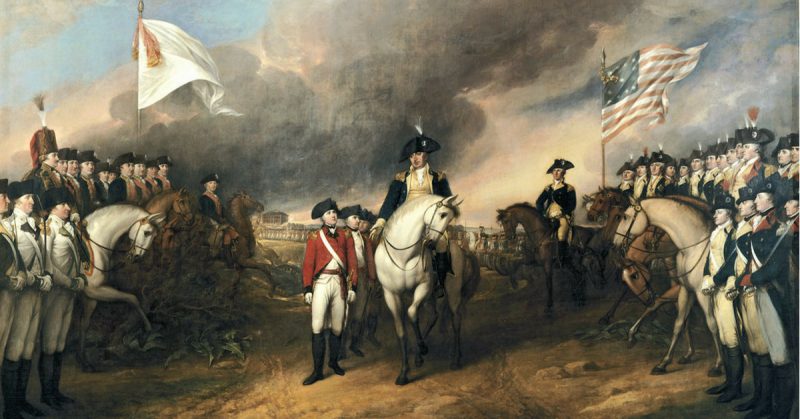The siege of Yorktown began on 28 September 1781. It was to last until October 19. In the weeks preceding the final battle, the British held the upper hand. General Charles Lord Cornwallis commanded 9,000 seasoned veterans in the twin ports of Yorktown and Gloucester.
Offshore, in the Atlantic, a fleet of Royal Navy warships was sailing to the Chesapeake with supplies and reinforcements. Opposing Cornwallis, at first, were but 3,000 ill-equipped American Continentals under the command of the Marquis de Lafayette.
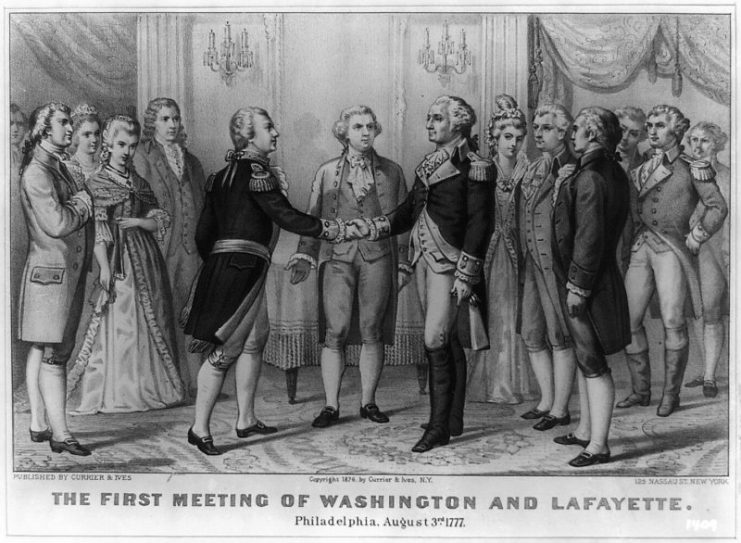
Prelude: Franco-American Cooperation
The genesis for the Battle of Yorktown is found in the alliance formed between the fledgling United States and France in 1777. King Louis XVI and his chevaliers were determined to exact revenge for the losses France had suffered at the hands of the English during the Seven Years War. In the early years of the revolution, France offered little support to America.
By mid-1781, however, the French decided to act. The Comte de Rochambeau was dispatched to Newport, Rhode Island with 11,000 French army troops. At the same time, the Americans sent word to Admiral de Grasse in the West Indies, requesting him to sail north with his fleet of twenty-nine warships.
Originally, the point of attack was to be New York, headquarters of the British in North America. Reluctantly, General Washington agreed to the alternative plan proposed by General Rochambeau: attack Cornwallis in Yorktown, Virginia. Among other factors cited by the French commander, Yorktown would be easier on Admiral De Grasse, who insisted he would return to the Caribbean in mid-October, after the close of the hurricane season.
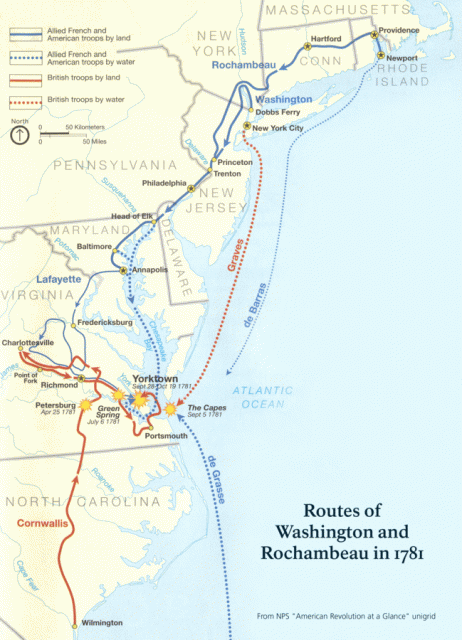
The Battle of the Chesapeake
When de Grasse arrived in Virginia in late August he found no Royal Navy ships of consequence there. That would change when, a few days later, a fleet of British ships was sighted bearing down on the Chesapeake, in numbers equal to the French fleet.
The sea battle that ensued was fought in traditional line-of-battle formation and was essentially a draw. Nonetheless, Admiral Thomas Graves decided to return to New York. His fateful decision left the Chesapeake open to the French and Cornwallis’s avenue of re-supply cut off.
Still, Cornwallis could have escaped the noose closing around him simply by marching his army out of Yorktown. Lafayette’s small force could have done little to stop him. Why he chose to remain in Yorktown is unclear; perhaps he was simply holding to the promise that he would be rescued by the Royal Navy.
Meanwhile, General Washington was leading an army of 8,000 regulars, 3,100 militia, and 10,800 French soldiers south from White Plains, New York. They arrived in Williamsburg on September 14.
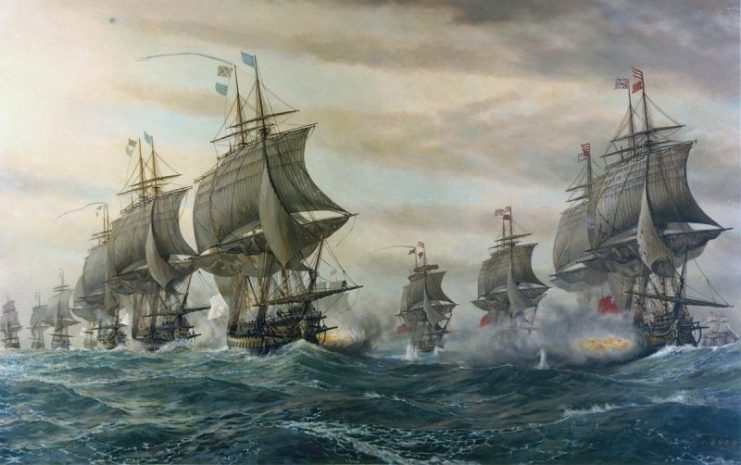
The Battle of Yorktown
Cornwallis was now hemmed in on land and sea. Escape had become impossible. He had no choice but to fight.
With the arrival of the allies, the siege began. The French army took position on the left side of Yorktown, the American on the position of honor on the right.
The first parallel was constructed, then the second, moving allied artillery ever closer to the British defenses. Day after day those defenses were bombarded by French and American cannon. Outer British defenses, called redoubts, were assaulted, captured, and added to the allied lines, thus closing the noose ever tighter.
Finally the British had had enough. On the morning of October 17, a young drummer boy and a Royal Army officer waving a white handkerchief appeared atop the British defenses. The battle ended just as a massive rescue fleet dispatched from British headquarters in New York approached the Chesapeake.
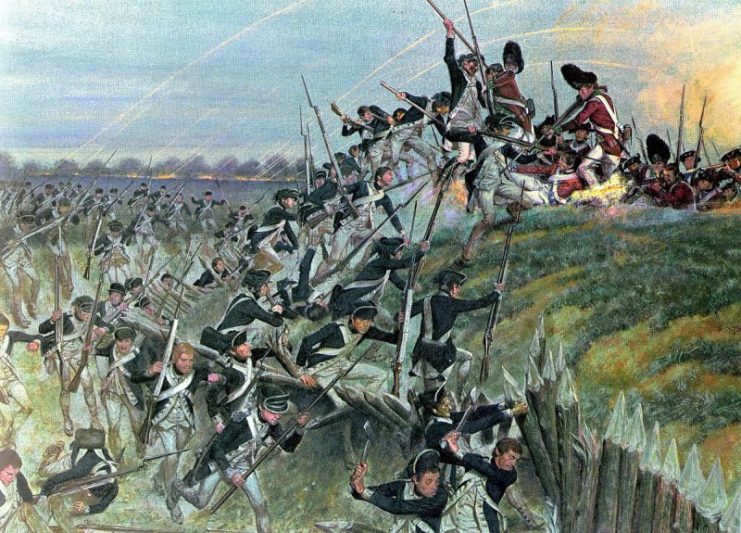
The Miracle of Yorktown
The victory at Yorktown effectively ended the Revolutionary War. No further land or sea battles of consequence were fought in North America. But for several weeks, which side would prevail at Yorktown hung in the balance. If the British Navy had won the Battle of the Chesapeake, the French fleet under de Grasse would have had to withdraw.
The allied army under Washington and Rochambeau would then have been caught in a vise between Cornwallis’s army marching north from Virginia and a second British army marching south from New York. Or, if Cornwallis had marched out of Yorktown when he had the chance, to fight another day, the outcome of the war could well have been different.
By 1781, many Americans had grown tired of war and didn’t much care who won as long as the war ended. As for France, if the British had been victorious in Yorktown, or if Cornwallis had avoided a battle there, the empire of King Louis XVI would have suffered a terrible blow.
The French treasury was nearly bankrupt. Further aid to America would have been impossible, and the fledging United States would not survive without French aid.
